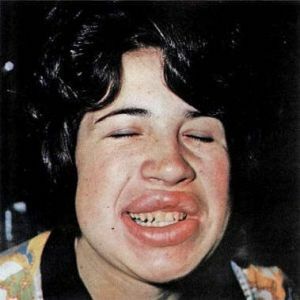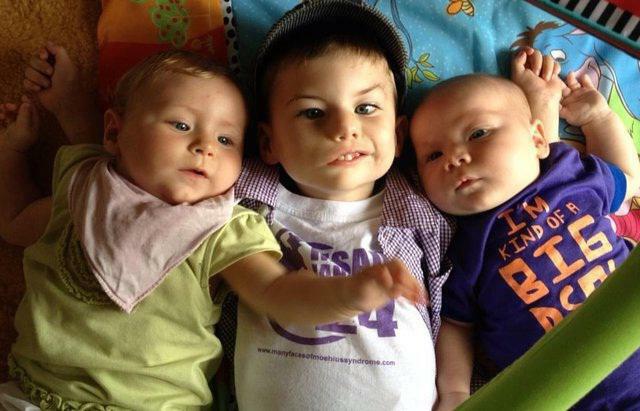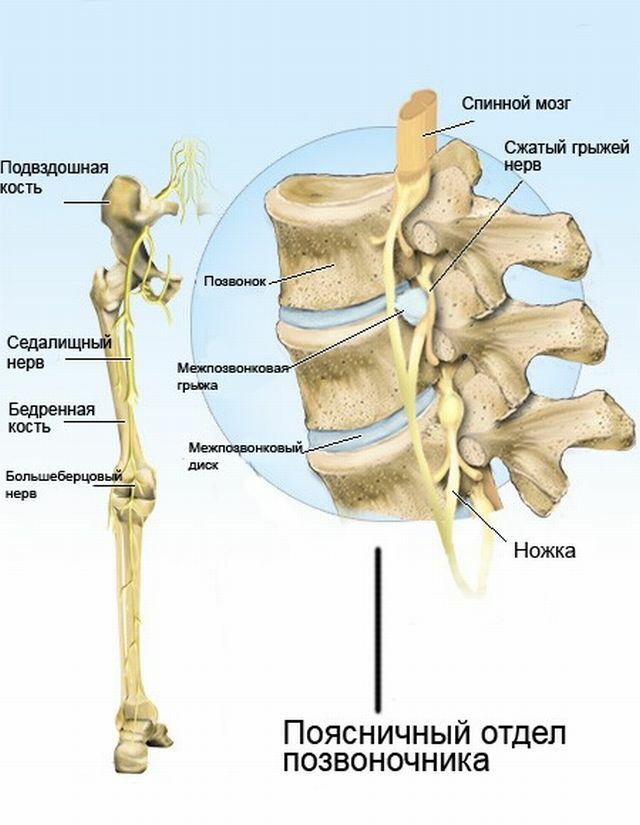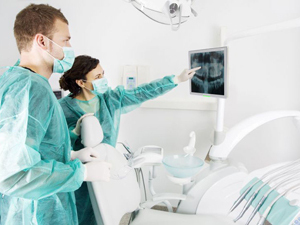 Arnold-Chiari anomaly is an brain function disorder .It manifests itself from birth and is identified by difference from the normal parameters of the occipital cranial fossa and brain components that are located in this region.
Arnold-Chiari anomaly is an brain function disorder .It manifests itself from birth and is identified by difference from the normal parameters of the occipital cranial fossa and brain components that are located in this region.
Such disorders lead to the fact that the amygdala of the cerebellum descends to the occipital part and is infringed there.
In this case, they descend in such a way that they reach the level of the first or second cervical vertebrae and block the normal course of the cerebrospinal fluid.
At this time, the causes of this disease are not fully understood, although now they are distinguished by several varieties.
Arnold Chiari Anomaly 1 degree is a congenital change that was transmitted from the parents. Arnold Chiari anomaly 2 degrees are injuries that the child received at birth.
Contents of
- Types of diseases and features of each of them
- Causes of the disease
- Symptoms and signs
- What is the difficulty of diagnosis?
- Treatment of illness
- Complications that can cause disease
- Forecast
Types of the disease and the characteristics of each of them
In 1891, Chiari scientists identified four types of the disease. This classification is relevant today, so doctors actively use it :
- Arnold Chiari anomaly 1 type - it is characterized by a decrease along the axis of the vertebral column of the components of the occipital cranial fossa to the level of the first or second vertebra.
- II type - very often you can see the development of hydrocephalus.
- III type - occurs not so often as the first two, and is characterized by a significant displacement of most of the components of the posterior cranial fossa.
- IV type - there is a hypoplasia of the cerebellum, while it does not shift downward.
If an anomaly of type III or IV is observed in a person, then it is impossible to live with it.
Causes of the disease
One can not say for certain because of what the anomaly of Arnold-Chiari can develop. It may be that the probability of a child's birth with this disease is increased by factors that have an effect on the woman's body, which awaits the of the child:
- drug use is higher than the allowable rate;

- the dimensions of the posterior cranial fossa are too small;
- reception of alcoholic beverages and smoking during pregnancy;
- frequent damage to the body by viral colds;
- occurrence of cranial or brain damage as a result of birth trauma;
- there are congenital and acquired reasons for the appearance of the Arnold-Chiari anomaly.
Symptoms and signs
The most common type of Arnold-Chiari anomalies can be found. Often it makes itself felt during puberty or already in adults. In this case, the following symptoms of the Arnold-Chiari anomaly appear:
- headaches resulting from coughing, sneezing, or physical exertion;
- violation of normal gait, caused by problems with maintaining the equilibrium state;
- problems with fine motor skills;
- impaired temperature sensitivity;
- numbness in the palm of the hand;
- sensation of pain in the neck and neck.
As for the II and III types of this disease, they show the same symptoms, only this happens even from the very birth.
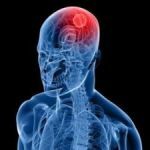 If a patient has a brain meningioma, treatment should be started immediately. This increases the chances of a full recovery.
If a patient has a brain meningioma, treatment should be started immediately. This increases the chances of a full recovery.
The more often can be caused ischemia of cerebral vessels and what methods of prevention are recommended by doctors.
What is the complexity of the diagnosis?
It is very difficult to diagnose the Arnold-Chiari anomaly. If you do a neurological examination, it can only indicate an increase in the level of intracranial pressure, which is called hydrocephalus.
If you do an x-ray of the brain, then it diagnoses only a violation of the structure of the bones, which usually accompanies this disease.
The only method that makes it possible to pinpoint the Arnold-Chiari anomaly is magnetic resonance tomography. In order to obtain a correct and reliable result, it is necessary for the patient to lie motionless. For this, children should be in a drug dream.
Sometimes this disease can not manifest itself in any way. And then it can be diagnosed only as a result of an intensified medical examination.

MRI photo with Arnold Chiari anomaly
Treatment of
disease There are two ways of treating the Arnold-Chiari anomaly - a conservative or non-surgical and surgical .
In case this disease occurs without manifestation of any symptoms, then it does not need treatment.
If the Arnold-Chiari anomaly of is manifested only by pain in the occipital region and neck of , then conservative treatment is prescribed in this case. Then, anesthetics or anti-inflammatory drugs are prescribed. This is the non-surgical way of treatment.
In case the symptoms of the disease do not lend themselves to conservative treatment, then a surgical one is prescribed.
The goal of this treatment is to eliminate the factors that cause the brain structures to clench.
As a result of the operation, the occipital part of the head expands, the movement of cerebrospinal fluid through the body improves. Shunting operations are possible.
Complications that can cause
In some cases, the Arnold-Chiari anomaly can be a very progressively developing disease and lead to certain complications. They can be:
- Hydrocephalus , resulting from the accumulation of larger than the allowed amount of fluid.
- Paralysis, which can be caused by compression of the spinal cord.
- Syringomyelia, which means the formation of a cavity or cyst in the spine. In such cavities, after their occurrence, liquid can enter and lead to disruption of the normal functioning of the spinal cord.
- It is possible that the breathing process is disturbed, which develops until it stops.
- There may be cases of congestive pneumonia arising as a result of the patient losing the ability to move independently.
Forecast
There are cases when the Arnold-Chiari type I anomaly does not show its symptoms throughout the life of the person who has this disease.
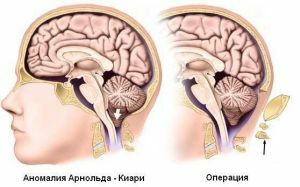 If Arthold-Chiari I and III types have any neurologic symptoms, should be performed as soon as possible.
If Arthold-Chiari I and III types have any neurologic symptoms, should be performed as soon as possible.
This is necessary because such a neurological defect is very difficult to completely eliminate even after a successful operation, especially if it was untimely or delayed.
Statistics show that the effectiveness of surgical treatment is 50-85%.

